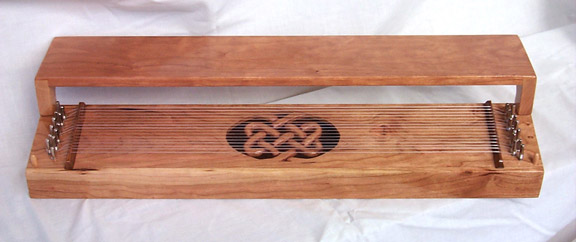Aeolian harp

Aeolian harp in cherry wood, by 'Harp' Horrigan.
The Aeolian harp is a medieval instrument consisting of a box about one meter (3 feet) long with, on its upper surface, catgut strings of different thicknesses but tuned in unison. Its name comes from Aeolus, the fabled keeper of the winds. The Aeolian harp could be placed along the width of a window ledge or elsewhere where the wind could catch it and set the strings in vibration, and they, being at low tension, vibrated in such a way that their harmonics (rather than their fundamental sounds) were evoked. The harmonics produced varied with the thickness of the strings and the speed of the wind, so that a chordal effect was produced. The main period of the Aeolian harp was from the end of the 16th century or beginning of the 17th century to near the end of the 19th.


